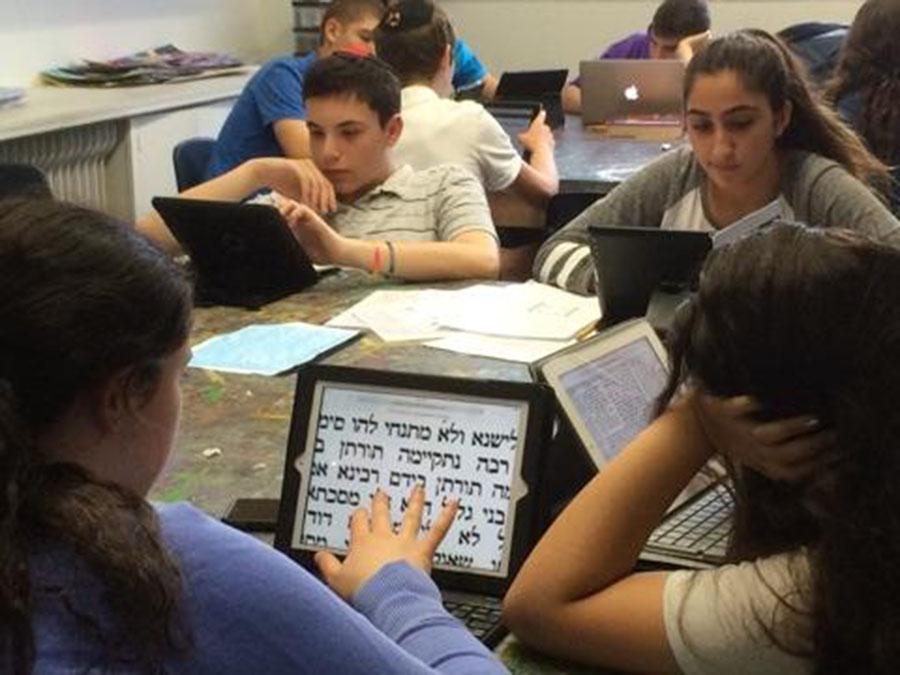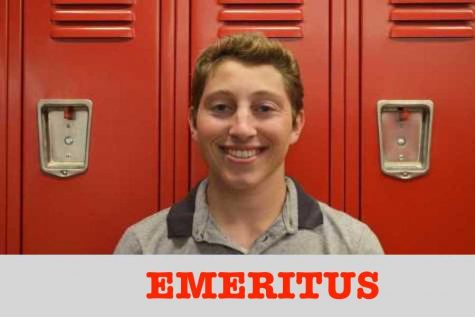New app for Talmud curriculum gets a tryout by sophomores
ROLL-OUT: Students punctuate, translate, highlight and take notes on new Judaic Studies app.
June 21, 2015
Enthusiasm was palpable in Rabbi David Stein’s 10th-grade Honors Talmud class May 29. After a month’s delay, the students were trying out the curriculum’s new app, planned for all Shalhevet students next year.
The new app was designed by Rabbi Stein specifically for the award-winning original Talmud curriculum, called Lahav, that he authored with Principal Reb Noam Weissman.
Pre-loaded with the parts of Gemara the curriculum covers, the interactive app enables iPad and computer users to both reference and annotate classroom materials. Also, anything a teacher does can be uploaded to a database that can be used by anyone who teaches using Lahav.
“For every source in the curriculum, the app provides access to every teacher’s guide, every lesson plan, every assessment that any user has ever created on that particular source,” said Rabbi Stein.
Since 2013, Shalhevet students have been highlighting and annotating the Gemara on iPads mostly using Notability, which can be mirrored on classroom TVs. But the new Lahav app has the Jastrow Talmud Dictionary embedded in it, and will let them click on individual words for translations.
During the classroom rollout, students used the app to learn a page of Gemara they had not previously studied, Eiruvim 53A. Initially, many students were excited to use the new features.
“I liked how the app allows us to define words from the text with ease,” said Adam Taryle, “because normally it takes a lot of our time to look up different words.”
By the end of class, however, interest had waned because technical difficulties prevented the app from working. The students resumed using Notability.
Still, the quick view they’d had of Lahav had already managed to change their expectations.
“The app will be really helpful in the future, but as of now there are a lot of problems that need to be fixed,” said Alex Reich.
Leon Levy liked it, too.
“It looks like a good work in a progress,” said Leon.
Rabbi Stein was happy with the outcome of the test.
“The test today accomplished its goals, which were to allow me to identify some of those and kind of get some feedback,” said Rabbi Stein. “At the same time, its clear that the product is not done yet.”
Several schools have expressed interest in using the app and the curriculum, Rabbi Stein said, and one has signed up to use it this coming fall, although officials there did not want to discuss it publicly yet.
“The app is actually going to be the platform with which we distribute [Lahav],” said Rabbi Stein. “For a new teacher who’s kind of never taught before and just figuring it out, here you have five lesson plans, five tests, and you have examples of how it’s been done before.
“Any user can upload materials to it; it’s open sourced. It really allows for creation of materials.”
The app was created with funds from a curriculum grant, Rabbi Stein said.
“As a team, Noam and I and Rabbi Segal at some point came up with the vision for an app,” he said. “It was a component of our very first grant proposal and presentation that we won.
“It costs tens of thousands of dollars to develop the app, so we needed to have the grant and the funding in place.”
Once they had the funding, they began looking for local app development teams that could include the features contained in Rabbi Stein’s early mock-up. They settled on DogTown Media and a company called Propagate, which had previously created an app to teach vocabulary and reading.
After the app was tested during class, students wrote down ideas for how to improve it. The app team plans to work over the summer to have it ready for fall.














